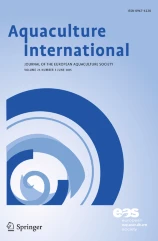Abstract
The study aimed to compare three fish protein hydrolysates (FPH) from different origins as dietary ingredients for Mozambique tilapia Oreochromis mossambicus. The ingredients were self-prepared fish silage from rainbow trout viscera and two commercial FPH products from shrimp and mixed marine by-products. Each ingredient was further included at two dietary levels: a low level where hydrolysed protein contributed 20 g kg−1 protein to the diet and a high level where protein contribution was 40 g kg−1. It was found that all three FPH products sustained high specific growth rates in excess of 2.5 % of body weight per day at both inclusion levels and that there were no negative impacts on production performance, animal health or intestinal gross morphology compared to the control. Further, there were no significant differences in specific growth rate, feed conversion, dress-out %, non-specific immunity parameters or intestinal morphology between any treatments. However, low inclusion of FPH from mixed marine origin (treatment HCL) showed significantly higher growth than high inclusion of self-prepared silage (treatment SH) through significantly higher final animal length and height; a simultaneous significant decrease in Jones condition factor in treatment HCL might be explained by a change in animal body composition. It is concluded that all FPH products were acceptable feed ingredients at the inclusion levels investigated; however, differences in animal growth seen between treatments HCL and SH might be the result of the different inclusion levels employed, and the FPH raw material origin. Further, interpretation of animal condition factor should also take into account supplementary trial data, as differences between treatments might not signify differences in animal well-being, but rather changes in body composition.

